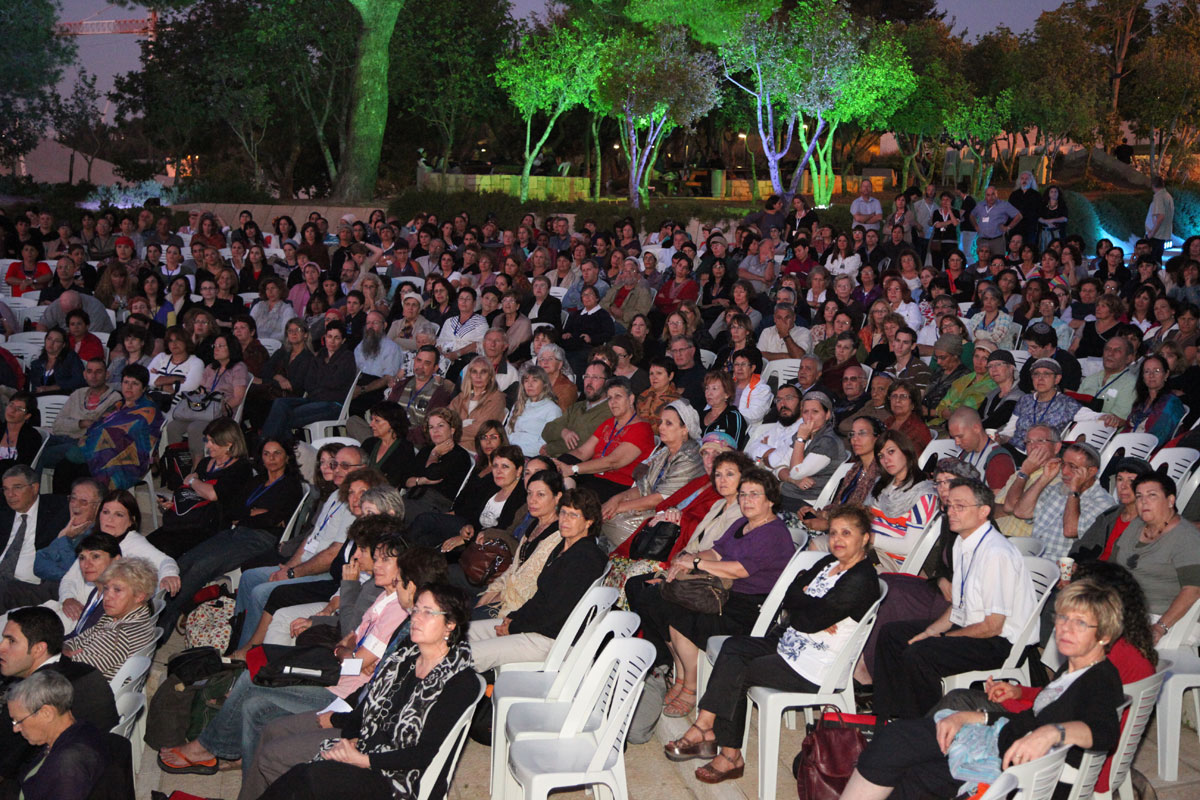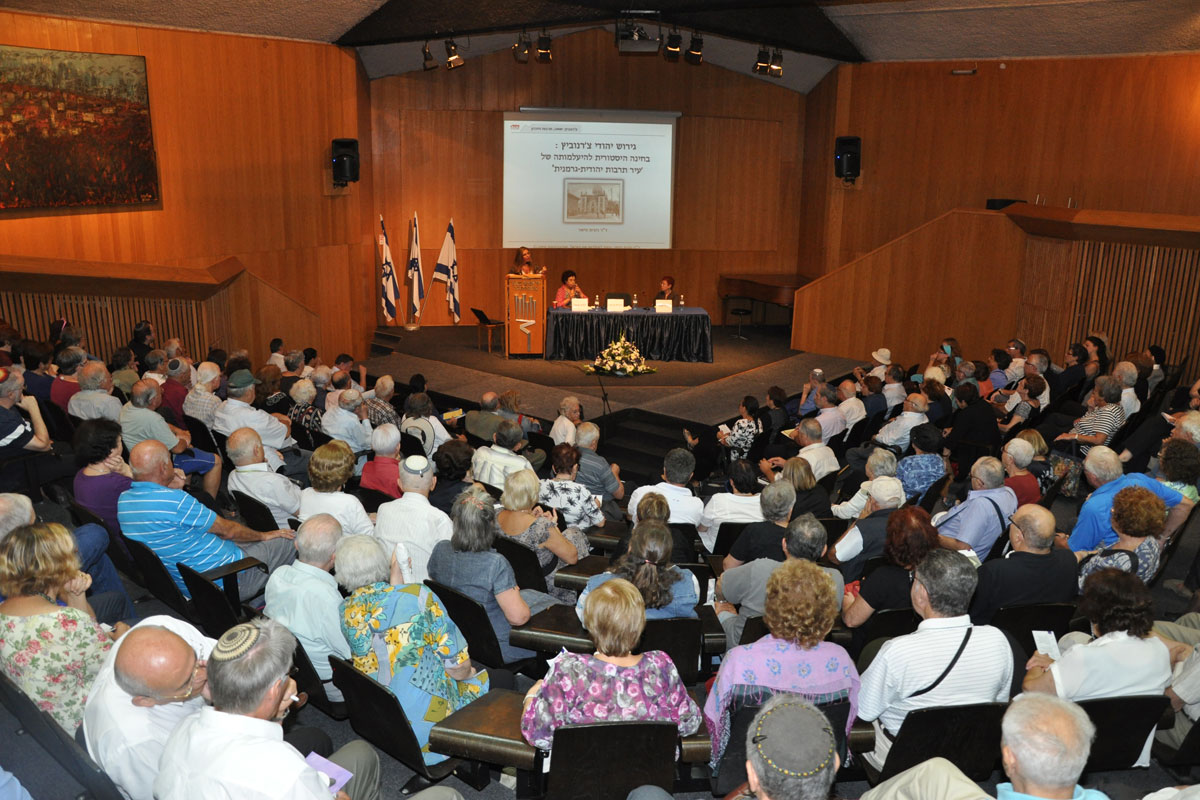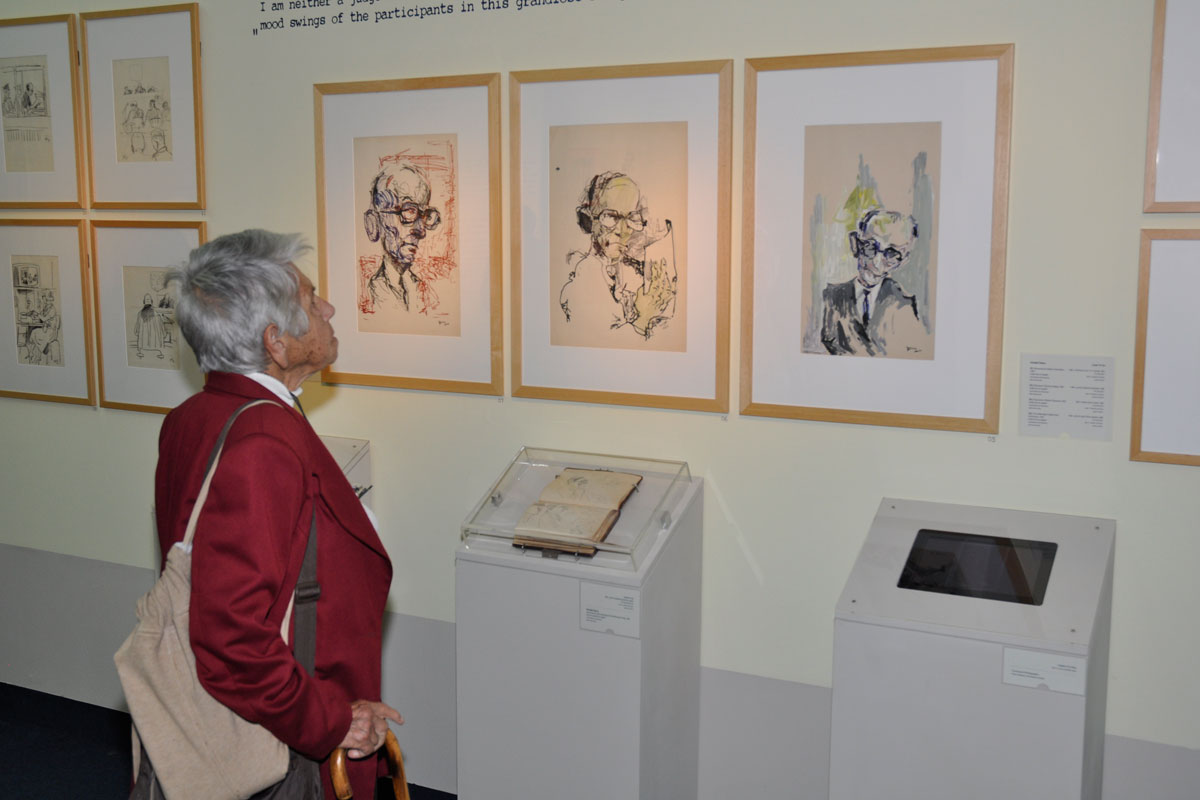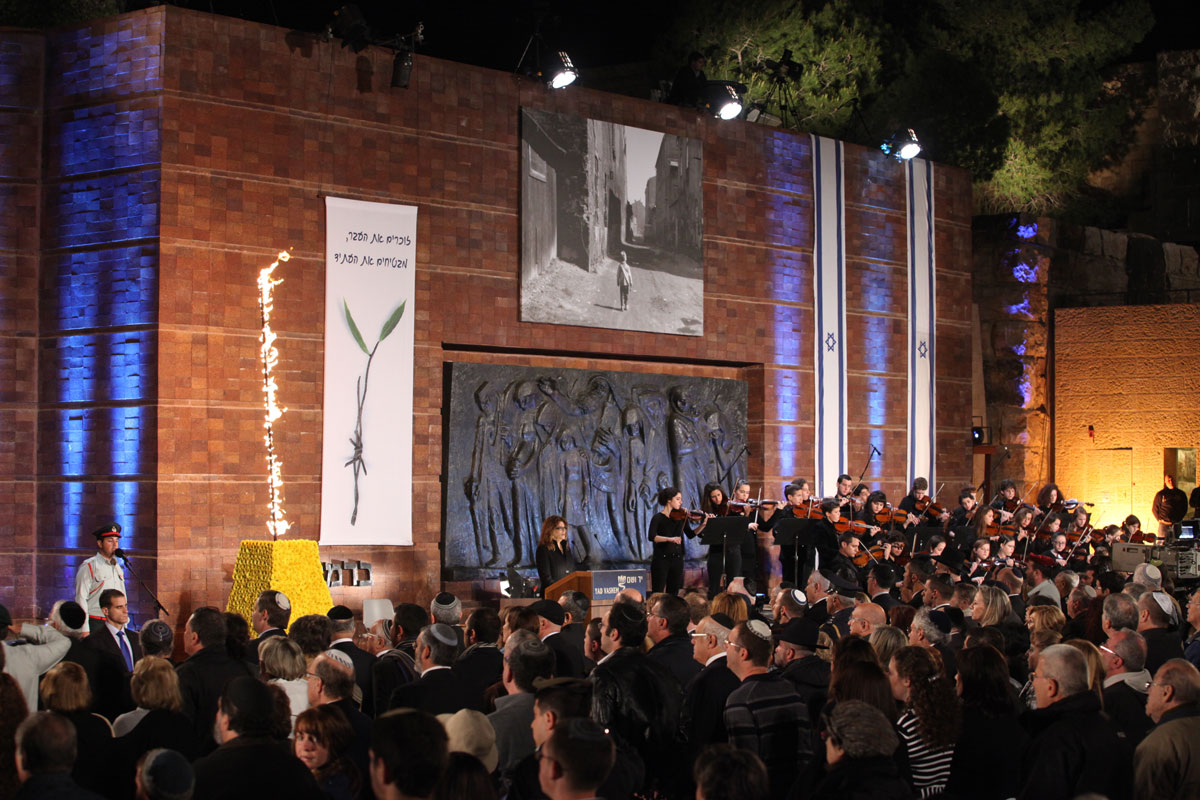Holocaust Education – The International School
Some 270,000 students from Israel and abroad, soldiers and officers of the IDF and other Israeli security forces participated in seminars and programs of the International School for Holocaust Studies and at the School’s branch in Givatayim. Of those, more than 74,000 were Jewish students from overseas.
67 long-term seminars were held at Yad Vashem for more than 1,400 educators from abroad.
Some 620 foreign educators participated in 46 teacher-training days at the School.
School staff participated in 58 seminars and conferences and worked in some 24 different countries around the globe.
127 seminars were conducted for more than 4,725 Israeli teachers.
8,275 Israeli educators attended 274 teacher-training days at Yad Vashem and throughout Israel. Among these were more than 1,200 ultra-Orthodox teachers.
More than 1,200 teachers from across Israel participated in the 4th National Teachers' Conference in July.
More than 2,200 teachers across the US received training as part of “Echoes and Reflections,” a joint project of Yad Vashem, the ADL and the USC Shoah Foundation Institute. Some 14,200 educators and community leaders have been trained since the inception of the program.
10 educational units were published in a variety of languages: Spanish, German, Polish, English and Hebrew. The units are intended for both formal and informal frameworks, and include textbooks, study guides, DVDs and drawings, providing a multi-disciplinary approach to Holocaust education.
An extensive range of educational material in 13 different languages was uploaded to the School's website. 744 individuals participated in online courses conducted in 6 languages, including a new pedagogical course. Also added to the website were 8 lesson plans, 18 sub-sites for special events, 17 international video conferences with 264 participants, 30 educational presentations, 13 online magazines for educators, online community forums, interactive maps, ceremonies, educational units and survivor testimonies. A new online social network on the Yad Vashem website provides a discussion platform for educators.
Research and Publications
The International Institute for Holocaust Research granted the first annual Yad Vashem International Book Prize for Holocaust Research in memory of Abraham Meir Schwarzbaum, Holocaust survivor, and his family members murdered in the Holocaust. The 2011 recipients were Prof. Christopher Browning for Remembering Survival: Inside a Nazi Slave-Labor Camp, and Prof. Daniel Blatman for The Death Marches: The Final Phase of Nazi Genocide.
The International Institute for Holocaust Research held 2 international research workshops and 28 workshops for Holocaust scholars, as well as the annual lecture of The John Najmann Chair of Holocaust Studies.
14 senior researchers from Israel and abroad were hosted at Yad Vashem, assisted by four-month fellowship grants by the Research Institute. The Institute also granted 15 awards to Master's and Doctoral students.
38 new publications were released by Yad Vashem, including 20 research studies, 9 memoirs, 4 diaries, 4 volumes of Yad Vashem Studies, and an exhibition catalogue.
Art works and Artifacts
798 artifacts and 423 works of art were added to Yad Vashem’s collections. The artifacts collection now holds some 10,230 items and some 14,000 museological pieces, and the art collection comprises some 8,600 pieces.
A new exhibition "With Me Here Are Six Million Accusers: 50th Anniversary of Eichmann's Trial in Jerusalem" opened in the foyer of the Auditorium, and the exhibition "Virtues of Memory: Six Decades of Holocaust Survivors' Creativity," was displayed in the Exhibitions Pavilion.
Traveling exhibitions were displayed in 45 locations worldwide. 30 exhibitions are now available in 10 languages, including Arabic, German, Spanish, Russian and English.
Righteous Among the Nations
555 individuals were recognized as Righteous Among the Nations. As of the end of 2011, more than 24,300 individuals have been recognized as Righteous Among the Nations.
Visits and Commemorative Events
Some 900,000 people visited Yad Vashem in 2011.
More than 44,120 visitors toured Yad Vashem on over 3,140 guided tours, led by Yad Vashem’s professionally trained staff. Among them were more than 800 visits by world leaders, dignitaries and official visitors.
The Commemoration and Public Relations Division held some 100 events, including the Holocaust Remembrance Day and VE Day ceremonies and more than 270 memorial services in conjunction with Holocaust survivor and next-generation organizations.
Internet Activity
More than 12 million visits from some 220 countries and territories were recorded in 2011 on the Yad Vashem website.
4 new YouTube channels were launched: Farsi, German and 2 channels containing the complete film track of the Eichmann trial – one in Hebrew and one with English simultaneous translation – in addition to the existing English, Hebrew, Russian, Arabic, and Spanish channels. Over 5.3 million video views were recorded on the channels since their launch.
More than 13,000 individuals have joined as members of Yad Vashem's Facebook page, bringing the total number of members to more than 37,000.
Yad Vashem's website won the "People and Computers" Magazine's Special Category WebiAward.
Documentation, Photographs, Names, Testimonies and Films
Some 4 million pages of Holocaust-era documentation were gathered by Yad Vashem. To date, Yad Vashem’s Archives, the largest and most comprehensive repository of its kind, contain some 142 million pages of documentation.
Some 4.2 million pages of Holocaust documentation were digitized.
Over 390,000 name occurrences of victims and survivors from archival lists and other documentation were digitized, among them archival documents gathered in Hungary, the former Soviet Union and other sources.
Yad Vashem has identified some two-thirds of the victims of the Holocaust. The Central Database of Shoah Victims’ Names now contains 4.1 million names of Holocaust victims, all of which are accessible online. The source of close to half the total number of names in the Names Database is over 2.2 million Pages of Testimony and the remainder from archival lists and documents.
The "Gathering the Fragments" campaign to rescue personal items from the Holocaust era held 48 collections days, collecting more than 40,000 items – documents, diaries, photographs, artifacts and art works – from 2,600 individuals.
Some 12,000 photographs were added to the Photo Archive, and some 5,600 to the Hall of Names. Yad Vashem currently houses some 410,000 photographs, including some 144,600 photographs attached to Pages of Testimony.
Some 263,000 photographs are easily accessible to the general public on the Yad Vashem website. Of those, 123,000 are attached to Pages of Testimony and accessible on the Central Database of Shoah Victims’ Names. 140,000 photographs from the Photo Archive were uploaded to the Internet in a joint project with Google that received 910,000 visits from around the world.
Some 1,000 new Holocaust survivor testimonies were filmed and recorded by the Oral History Section, Archives Division, aided by an outreach program enabling survivors to have their testimonies filmed at home, and some 9,000 testimonies that had been recorded by others were acquired by the Archives. The Archives currently house some 110,000 video, audio and written testimonies.
Some 31,000 public inquiries were answered by the Reference and Information Services Unit. Of these inquiries, 8,000 members of the public were assisted in the Library and Archives Reading Room, and over 23,000 were written queries.
Some 5,000 book titles were acquired by the Yad Vashem Library. The most comprehensive collection of published material about the Holocaust, the Library now holds over 133,000 titles in 54 languages.
The Visual Center acquired some 300 films, including classics from the past as well as new films, and catalogued more than 1,150 from a variety of genres. The total number of catalogued films has reached some 7,000. Currently over half of these titles, more than 4,400 films, are available for viewing at the Visual Center. This year the Visual Center Film Database Archive was uploaded to the Internet and is available at the Yad Vashem website.
In additional to thousands of visitors to the Visual Center, some 100 groups of students, teachers and film directors took part in Holocaust-related film programs, including lectures on film and the Holocaust. The Visual Center held some 15 special screenings of new films at commemorative events and at film festivals in Jerusalem and around the world.
The Visual Center Staff responded to some 830 public inquiries for research and information regarding the cinema and the Holocaust.
The Visual Center granted the sixth annual Avner Shalev Yad Vashem Chairman’s Award to Director Marcus O. Rosenmüller for his film Wunderkinder. The annual award is presented for artistic achievement in Holocaust-related film.











